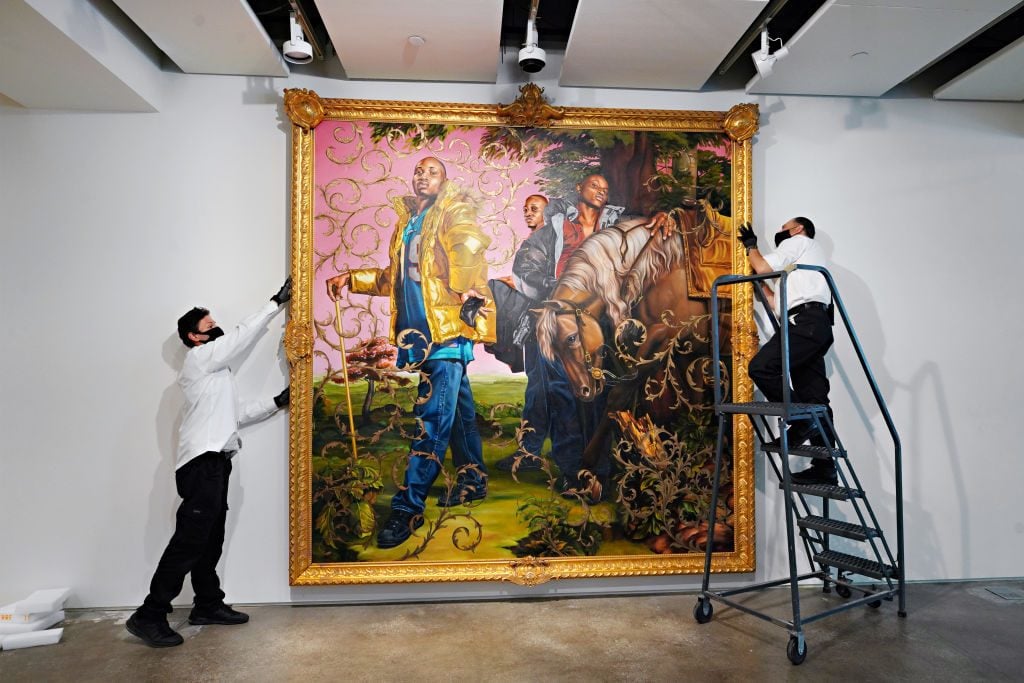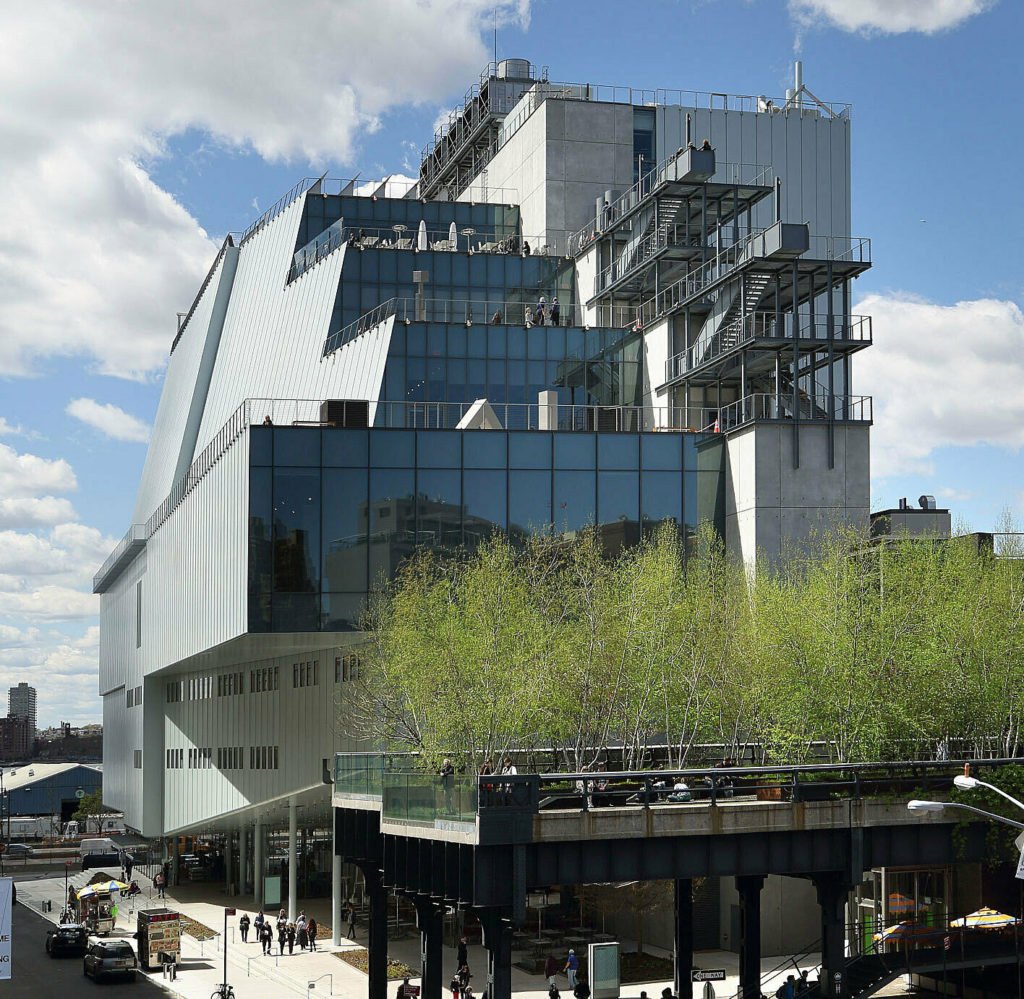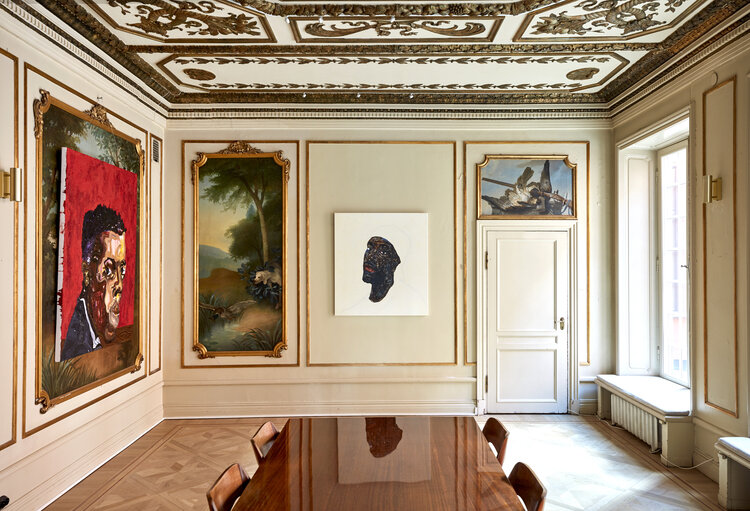Art World
Responding to Widespread Demands, Museums Are Acquiring More Works by Artists of Color. But How They Do So Matters More Than Ever
Artists and cultural producers say museums need to collect and exhibit works with more respect and care.

Artists and cultural producers say museums need to collect and exhibit works with more respect and care.

Melissa Smith

The controversy that erupted last week over the Whitney Museum’s planned—and quickly cancelled—exhibition of works, many by Black artists, that the museum acquired through a fundraiser in June has shined a spotlight on a simmering issue.
These days, many cultural producers of color say it is no longer enough for museums to acquire Black art, but to do so with the same respect and care they typically offer to white artists. Until recently, that part has gone largely ignored.
The Whitney, which can take years to organize a single exhibition, conceived of the since-cancelled show, titled “Collective Actions: Artist Interventions in a Time of Change,” in response to the pandemic and the Black Lives Matter movement.
Announced three weeks before it was set to open, the show was to include around a dozen works by Black artists that the museum bought for $100 each at a fundraiser organized by the Black photography collective See In Black to raise money for various non-profits, including the Youth Empowerment Project and the National Black Justice Coalition.
The show, which artists learned of through an email from curator Farris Wahbeh sent on the same day the show was announced, struck many as sloppy and exploitative.
“It just seemed like they were going to do it regardless,” says Micaiah Carter, the cofounder of See In Black. “And they just seemed like, ‘We’re the Whitney, we’ve acquired these, and you’ve got to be happy.’”

The Whitney Museum of American Art. Image courtesy the museum.
That attitude didn’t come as a huge shock Carter, nor to See In Black cofounder Joshua Kissi, nor the other Black artists and cultural producers I spoke to for this story, many of whom say the museum’s approach was simply business as usual.
“I’m kind of glad this situation happened, as stressful as it was,” Kissi says. “Because it is an example of how art institutions have traditionally interacted with Black artists,” especially when dealing with work museums assume “rightful ownership over.”
The prevailing impression in the industry is still that museums bestow opportunity on Black artists simply by including them in exhibitions, when in fact, the opposite is true: to truly fulfill their responsibilities as cultural institutions and survive and stay relevant in a changing world, museums need Black artists.
The Whitney “missed a great opportunity to be an ally to Black artists in an era that’s super sensitive,” Kissi says. Unless other institutions do better and prove they’re equipped to provide a meaningful forum for discussions about race, they’ll risk seeing more Black artists march out rather than in.
Exhibiting “political” work is still rare, with many art institutions steering clear of “anything that would be considered controversial,” says curator Larry Ossei-Mensah.
But even when they try, many art institutions have a history of not “dealing with Black and brown artists with the same level of care [as white artists].” he says.
When organizing a show, curators typically should ask a few questions. “Who does this benefit? Who does this harm? Who is this art serving? And what was it for in the first place?” says La Tanya Autry, a curatorial fellow at the Museum of Contemporary Art in Cleveland and co-creator of the Museums Are Not Neutral advocacy group.
After determining the show’s cultural value, the Whitney, she says, should have collaborated with the artists involved in it.
A major aspect of the controversy was that the Whitney did not pay market prices for the works it bought at the See In Black auction, leading many of the artists involved to feel especially cheated and undervalued. In its email to the show’s participants, the museum offered a free lifetime admissions pass.
This sent a clear message to Laurent Chevalier, who donated a work for the fundraiser.
“In [curator Farris Wahbeh’s] email to the artists, he said the work that was selected was for this time and of this moment,” Chevalier says. “If so, you should be providing resources to people to make sure they can keep doing the work you’re so enamored by.”
Wahbeh did not responded to Artnet News’s request for comment. In a statement from the museum, a spokesperson told Artnet News: “We have reached out to all of the artists directly and we are considering all of these issues carefully.”

Installation view, “BLACK VOICES / BLACK MICROCOSM” at CFHill, Sweden.
So far, the art industry’s attempts at reparations have largely involved celebrating artists that institutions overlooked years ago, rather than interrogating why those exclusions happened in the first place.
“A lot of times, the stuff that they’re so tremendously excited about was made in the ‘60s and ‘70s,” Chevalier says. “So it’s like, wait a minute, if you’re excited about work made four decades ago, and if the system led you to overlook Frank Bowling and Barkley Hendricks, what about the system has changed when you’re trying to catch up?”
Not much, according to Autry, given that museums “have not made significant changes to the conditions that created these problems.”
When, one by one, institutions issued statements in solidarity with the Black Lives Matter movement after the police killing of George Floyd, many museum employees (including ones at the San Francisco Museum of Modern Art) quickly turned around and called them out as “racist environments,” Autry says.
Stumped as to how to react, “the best the institutions could come up with is to throw on a show or a program. They really keep thinking of that quick, band-aid fix, when what they need to do is fix their internal dynamics,” she says.
Meanwhile, even if these institutions have professionals of color who can “highlight all the problems in the internal dynamics,” she says, “these institutions will typically just shut that person down, and say, well, we’ve got these artists of color.“
Autry, who was openly critical of how MoCA handled its cancelled exhibition of Shaun Leonardo’s drawings of police brutality, says a museum’s job is to set the stage for meaningful dialogue, internally and externally.
But Ossei-Mensah says the fallout from the Whitney show may have an influence over how future self-organized events by Black artists, such as the See In Black fundraiser, are put together.
“Either we will get more creative about how we do a sale like that,” Kissi says, ”or find other ways to support our communities, other ways to support visibility.”
When institutional validation comes at such a steep cost, artists may opt to sell their works directly through galleries to collectors willing to pay market values, Carter says, rather than “trying to trust the system that’s already broken. And I don’t know if it is even possible to fix at this point.”
Assuming it is, Autry suggests white institutions look to Black museums for guidance, as they have “already been doing that kind of work,” she says.
“I don’t want museums to be the same 20, 30, or 50 years from now,” Autry says. “More professionals of color in the art world have been speaking up, and we should never go back.”